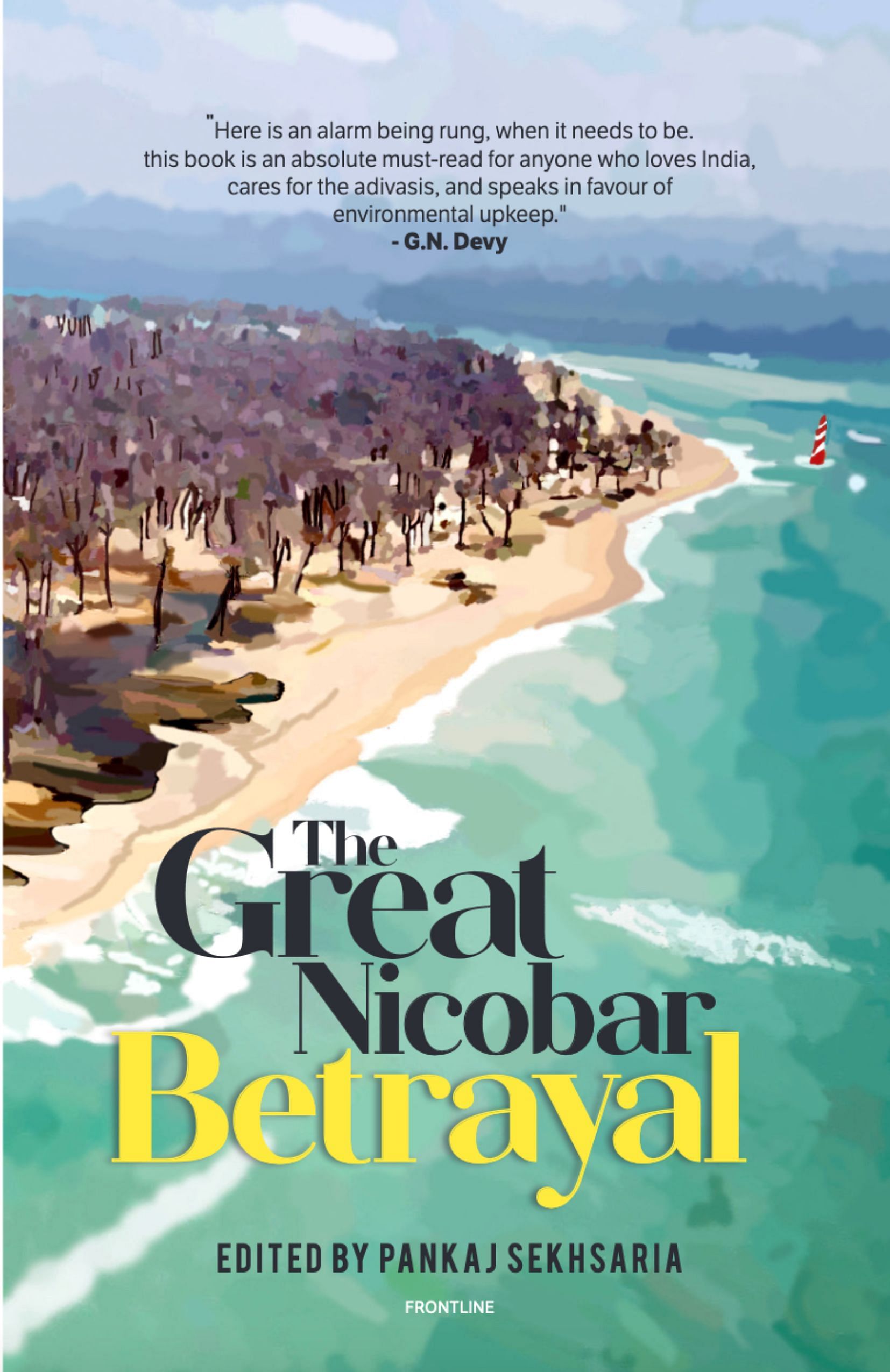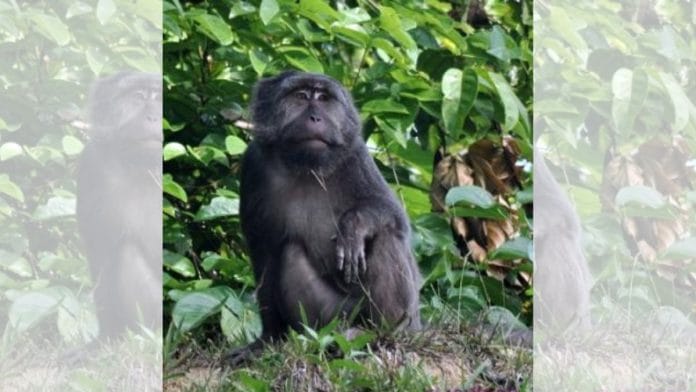At the southernmost tip of India, off the eastern coast, Great Nicobar Island (GNI) is a tropical oasis in the Andaman Sea. This biogeographical marvel of 910 sq km is the last island that makes up the Andaman and Nicobar archipelago. Historically, this island was inhabited by the Nicobarese and the Shompen communities. But a third heterogeneous settler community has been added as a result of migration of people from various States in India to the GNI since the 1960s. The diversity of habitats on the island, combined with the island’s geographical position and climate, has resulted in an assemblage of unique flora and fauna, including several endemic species. The many land use changes that the island has undergone over the years has resulted in an increased overlap between people and endemic fauna and the influx of invasive species, which was accelerated by sudden alterations to the environment such as the tsunami of 2004 and subsequent rehabilitation efforts.
Protected status stripped
In 2021, large swathes of land and coastal area, including portions of the Great Nicobar Biosphere Reserve and Galathea Bay, were stripped of their protected status to make way for a massive construction project envisioned by the NITI Aayog and proposed by the Andaman and Nicobar Islands Integrated Development Corporation. Needless to say, this will result in drastic and devastating changes to the ecology and sociology of the island.
The site selection and scale of the plans remained unchanged even after objections were raised about the rapid and insufficient environmental impact assessment (EIA) conducted in the GNI from December 2020 to February 2021. Former Prime Minister Rajiv Gandhi had rejected a plan for the construction of a transshipment port at other sites in the Andaman and Nicobar Islands, including the capital, Port Blair, citing its potential impact on the islands.
However, now the Andaman and Nicobar Forest Department, the Tribal Welfare Department, and the National Board for Wildlife, among others, have come together to fast-track the plans. From denotifying protected areas to endangering the existence of the forest-dwelling Shompen community, the wide-scale development continues to loom large for the GNI, which also has a 202 km coastline surrounded by coral reefs and ecologically important marine life on which the Nicobarese people depend.
Over the last two years, numerous concerns have been voiced by a plethora of parties, including ecologists, anthropologists, and the public. These include the hazards of developing a township over 149 sq km of seismically volatile land; the lack of adequate access to freshwater for the envisioned future of the island; the immense impact on coastal nesting sites of the vulnerable leatherback sea turtle; the loss of around a million trees from some of the most pristine forests dating back to the Pleistocene period; endangering the already small population of the Nicobar long-tailed macaque (Macaca fascicularis umbrosa); and the destruction of the limited habitat accessible to the Nicobar megapode (Megapodius nicobarensis).
The project is estimated to require 86,600 kilolitres of water per day (KLD), of which 45,000 KLD will be freshwater drawn from surface reservoirs yet to be constructed. The plans also do not at present include provisions for disposal or safe recycling of waste and remnant water from these processes.
Also read: ‘Just want to convert Nicobar into Singapore’ — why the island project is a ‘monumental folly’
Studies on macaques
Following the tsunami, studies were conducted in the GNI by various Indian scholars on Nicobar long-tailed macaques and their intricate socio-ecological systems: from their population and conservation status to their cognition and interactions with local settler communities. The published scientific evidence from the studies and the proposed non-inclusive development of the island led the Association of Indian Primatologists (AIP), a community of people from various walks of life who share the goals of promoting scientific aptitude, ethics, and welfare in Indian primatology, to express concern about the fate of the macaques.
The AIP took exception to the Great Nicobar project EIA conducted by a Hyderabad-based laboratory during the public hearing held in January 2022, pointing out the misleading and inaccurate statements regarding the endemic macaques, including suggestions for unscientific and potentially harmful mitigation measures. The EIA report, the AIP maintained, disregarded the ecology and behaviour of the species and undermined its value to the ecosystem even though it is a Schedule I species protected under the Wildlife (Protection) Act, 1972, and a “vulnerable” species globally. Besides, it was evident that insufficient time and effort had gone into assessing the true impact of the proposed project on the macaques.
The report further seemed to wantonly villainise the macaques through the use of words such a “rampant”, “pest”, and “menace”, which the AIP found to be unsubstantiated and unscientific and based largely on hearsay and assumptions after a mere four-day survey. It asserted that the future of a Schedule I species could not be decided on the basis of speculation.
Following criticism regarding the lack of evidence and inadequate mitigation measures cited in the EIA (of the Hyderabad-based laboratory), the Principal Chief Conservator of Forests, Andaman and Nicobar Islands, and the Ministry of Home Affairs directed the Wildlife Institute of India, Dehradun, and the Salim Ali Centre for Ornithology and Natural History, Coimbatore, to develop a conservation action plan exclusively for marine turtles, saltwater crocodiles, megapodes, and mangroves. The Zoological Survey of India was similarly tasked with developing a plan for coral reef conservation and translocation. However, apart from the Environmental Appraisal Committee (EAC) making a passing mention of installing canopy bridges to maintain forest corridors, no explicit conservation plans have been sought for the macaques.
Also read: Andaman & Nicobar Command undergoing major upgrade. A Chinese threat looming close by
Lack of viable markets
Although negative interactions between people and macaques do occur in the GNI, the EIA report hyper-exaggerates the degree and extent of these, according to the AIP. A study of local farmers from 2020 suggests that small landholdings and the lack of an economically viable market for locally grown crops are what have put people in economic peril, and not the macaques themselves. Residents of the island reflected that macaques increased their presence in human settlements after the tsunami destroyed patches of forest containing their food. Similar studies from other regions have also shown that the destruction of habitat leads to negative interactions between humans and macaques.
It is clear from several surveys and studies since 2017 that the overall sentiment towards the macaques cannot be categorised as “negative” and human-macaque interactions are not limited to “conflict”. The residents revere macaques as monkeys from the Ramayana who drifted there during the war with Ravana. The local Hindu community also likens the macaques to the monkey god, Hanuman, which causes them to treat the species with respect and kindness.
Also read: Andaman & Nicobar enhanced India’s role in Bay of Bengal. Open them up for US, Japan, France
Reduction of forest cover
The residents of the GNI, on the basis of their observations, opine that the gradual reduction in forest cover over the years and the tsunami contributed heavily to the rise in animal conflict, which takes the blame away from the macaques and places it on people. Most of the people are empathetic and do not wish to use harmful or fatal means to mitigate their negative interactions with the macaques.
The Nicobarese community too has a deep connection with the Nicobar long-tailed macaque. All residents, settlers, and indigenous communities alike, have an instinctive fascination for these animals and enjoy observing them.
The nature of people’s interactions with the endemic macaque is unique, multifaceted, and complicated. Calling these relationships “rampant” conflict is an oversimplification at best, and a feeble attempt to disregard an entire population of a vulnerable species at worst. One must work towards conflict mitigation and the preservation of positive relationships with the aid of researchers and local stakeholders regardless of the impending construction plans in the GNI. Conflict as an argument for the dismissal of the Nicobar long-tailed macaque is unacceptable and unethical.
Apart from the macaques’ interactions with the people, the expected alterations to the island’s habitats are another major area of concern. An assessment of macaque troops in the island in 2016 found that 40 to 70 per cent of the 36 troops identified stand to lose their territories because of the approved construction work on the island. Rising urbanisation and other forms of secondary development are known to contribute to increased human-animal conflict elsewhere with several animal species, and are likely to be detrimental in this landscape too.
Anthropogenic threats
Sudden changes in habitat could increase territorial fights among the macaques and result in serious injuries, which often lead to fatalities. Landscape-level changes also modify macaque diets, affecting their health and nutrition. Other anthropogenic threats, from the risk of electrocution to climate change, will arise as well. Macaques have a restricted range, and such drastic alterations to their surroundings and threats to their already limited numbers can increase chances of inbreeding and loss of diverse gene pools. This can be disastrous, resulting in epidemics and loss of reproductive viability that will decimate the population. One stands to further endanger and lose a species of primate in India that is already vulnerable even before one has had a chance to fully understand its ecology, behaviour, and needs.
Sudden, rapid transformations on the island will be detrimental to the social, economic, and ecological well-being of all involved. The fact that the large project in the GNI currently lacks sustainable planning, a scientific basis, and independent voices can only result in catastrophic consequences. The hope is that effective mitigation measures, and scientific and sustainable planning will ensure that the valuable biodiversity and breathtakingly beautiful environment of Great Nicobar Island can continue to live on, unthreatened.
 This excerpt from The Great Nicobar Betrayal edited by Pankaj Sekhsaria has been published with permission from Frontline.
This excerpt from The Great Nicobar Betrayal edited by Pankaj Sekhsaria has been published with permission from Frontline.






